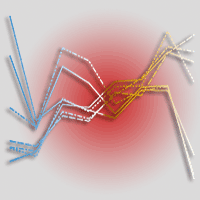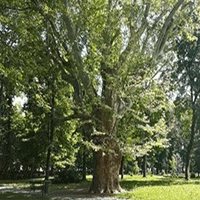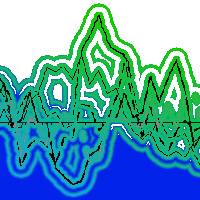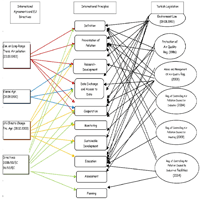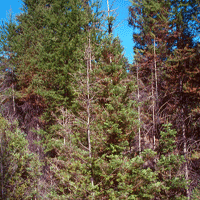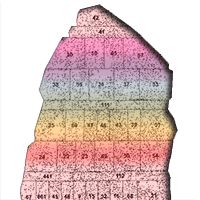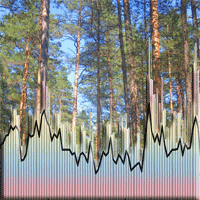
Growth patterns of Scots pine (Pinus sylvestris L.) under the current regional pollution load in Lithuania
Algirdas Augustaitis (1) , Ingrida Augustaitiene (1), Gintautas Mozgeris (1), Romualdas Juknys (2), Adomas Vitas (2), Dalia Jasinevičiene (3)
iForest - Biogeosciences and Forestry, Volume 8, Issue 4, Pages 509-516 (2014)
doi: https://doi.org/10.3832/ifor1267-007
Published: Nov 12, 2014 - Copyright © 2014 SISEF
Research Articles
Collection/Special Issue: IUFRO 7.01.00 - Ilhéus (Brazil, 2013) & Beijing (China, 2014)
Forest Response to Climate Change and Air Pollution
Guest Editors: Paoletti E, Kozovitz A, Feng Z, Bytnerowicz A
Abstract
The belief that trees have begun growing more rapidly in recent years was examined in Scots pine (Pinus sylvestris L.) forests, a dominant forest type in Lithuania. The largest, pre-dominant pine trees, with a diameter at breast height exceeding 50 cm, were selected for analysis in this study; these were growing in three experimental overly-mature stands located in different parts of Lithuania (north-eastern, western and seaside). We hypothesized that if the annual tree increment has increased in recent years, then the largest trees in the stand should regularly demonstrate this characteristic first of all. The data collected for this study confirmed that since the 1980 growing season the annual increment of the pine trees analysed here has increased. The causes of this rapid growth were higher air temperatures during the dormant period and, to a lesser extent, the higher temperatures from May through August. The effect of precipitation was negligible. A 30-year long data set on acidifying pollutants allowed us to detect significant effect of reduced SO2 concentration and sulphur deposition as well as gradually increased ammonia deposition on the increased annual basal area increment of pine trees over the last 30 year long period. Multiple regression analysis indicated that meteorological parameters can explain up to 50% of the observed increase in the growth rate of Scots pine in Lithuania; meanwhile the presence of acidifying species can account for an additional 30%. However, the pollution data set (20-30 years) was insufficiently long to be compared with the meteorological data. Therefore we were unable to distinguish whether the recent decrease in pollution or global warming resulted in the increases in tree growth rates more significant.
Keywords
Scots Pine Growth, Pre-dominant Trees, Climate Change, Acidifying Species
Authors’ Info
Authors’ address
Ingrida Augustaitiene
Gintautas Mozgeris
Aleksandras Stulginskis University, Akademia, LT-53362 Kaunas (Lithuania)
Center for Physical Sciences and Technology, LT-02300 Vilnius (Lithuania)
Corresponding author
Paper Info
Citation
Augustaitis A, Augustaitiene I, Mozgeris G, Juknys R, Vitas A, Jasinevičiene D (2014). Growth patterns of Scots pine (Pinus sylvestris L.) under the current regional pollution load in Lithuania. iForest 8: 509-516. - doi: 10.3832/ifor1267-007
Academic Editor
Silvano Fares
Paper history
Received: Feb 11, 2014
Accepted: Jul 30, 2014
First online: Nov 12, 2014
Publication Date: Aug 02, 2015
Publication Time: 3.50 months
Copyright Information
© SISEF - The Italian Society of Silviculture and Forest Ecology 2014
Open Access
This article is distributed under the terms of the Creative Commons Attribution-Non Commercial 4.0 International (https://creativecommons.org/licenses/by-nc/4.0/), which permits unrestricted use, distribution, and reproduction in any medium, provided you give appropriate credit to the original author(s) and the source, provide a link to the Creative Commons license, and indicate if changes were made.
Web Metrics
Breakdown by View Type
Article Usage
Total Article Views: 55033
(from publication date up to now)
Breakdown by View Type
HTML Page Views: 45813
Abstract Page Views: 3446
PDF Downloads: 4259
Citation/Reference Downloads: 19
XML Downloads: 1496
Web Metrics
Days since publication: 4055
Overall contacts: 55033
Avg. contacts per week: 95.00
Citation Metrics
Article Citations
Article citations are based on data periodically collected from the Clarivate Web of Science web site
(last update: Mar 2025)
Total number of cites (since 2015): 15
Average cites per year: 1.36
Publication Metrics
by Dimensions ©
Articles citing this article
List of the papers citing this article based on CrossRef Cited-by.
References
The changes of Scots pine (Pinus sylvestris L.) tree stem and crown increment under decreased environmental pollution load. Ekologia 22 (suppl 1): 35-41.
Gscholar
The use of climatic response models of tree rings in the analysis and prediction of forest decline. In: Proceedings of the Task Force Meeting on Methodology of Dendrochronology East/West Approaches “Methods of Dendrochronology-1” (Kairiukštis L, Bednarz Z, Feliksic E eds). Krakow (Poland) 2-6 June, 1986, pp. 269-276.
Gscholar
Methods of dendrochronology. Kluwer, Dordrecht, The Netherlands, pp. 394.
Gscholar
Intensive monitoring of forest ecosystems in Europe: 1. Objectives, set-up and evaluation strategy. Forest ecology and management 174: 77-95.
CrossRef | Gscholar
On the application of dendrochronology for the evaluation of forest damage, inventorying and monitoring endangered forests. In: “Materials of IUFRO conference” (Schmid-Haas P ed). Zurich (Switzerland) 19-24 Aug 1985, pp. 287-290.
Gscholar
Working group 1 - Forest habit. In: Proceedings of the Expert Workshop “Empirical Critical Loads for Nitrogen” (Achermann B, Bobbink R eds). Berne (Switzerland) 11-13 Nov 2002, pp. 21-26.
Gscholar
The likely impact of elevated [CO2], nitrogen deposition, increased temperature, and management on carbon sequestration in temperate and boreal forest ecosystems. A literature review. New Phytologist 173: 463-480.
CrossRef | Gscholar
Climate change, air pollution and global challenges: understanding and perspectives from forest research. In: “Climate Change, Air Pollution and Global Challenges: Knowledge, Understanding and Perspectives from Forest Research” (Matyssek R, Clarke N, Cudlin P, Mikkelsen TN, Tuovinen J-P, Wieser G, Paoletti E eds). Elsevier Physical Sciences Series “Developments in Environmental Science” (Krupa S eds), part I, pp. 3-14.
Online | Gscholar
Conclusions and perspectives. In: “Climate Change, Air Pollution and Global Challenges: Knowledge, Understanding and Perspectives from Forest Research” (Matyssek R, Clarke N, Cudlin P, Mikkelsen TN, Tuovinen J-P, Wieser G, Paoletti E eds). Elsevier Physical Sciences Series “Developments in Environmental Science” (Krupa S ed), part VIII, pp. 591-609.
Online | Gscholar
Weather conditions during 1980-1995 and tree damage directly attributable to weather. In: “Forest condition in a changing environment - the Finnish case” (Mälkönen E ed). Kluwer Academic, Dordrecht, The Netherlands, pp. 41-48.
Gscholar
Relationships between recent changes of growth and nutrition of Norway spruce, Scots pine and European beech forests in Europe - Recognition. Working Paper 19, European Forest Institute, Joensuu, Finland, pp. 94.
Online | Gscholar
Analyses of the impact of changes in atmospheric deposition and climate on forest growth in European monitoring plots: a stand growth approach. Forest Ecology and Management 258: 1735-1750.
CrossRef | Gscholar
Growth trends in European forests. Springer, Berlin Heidelberg New York, pp. 372.
Gscholar


